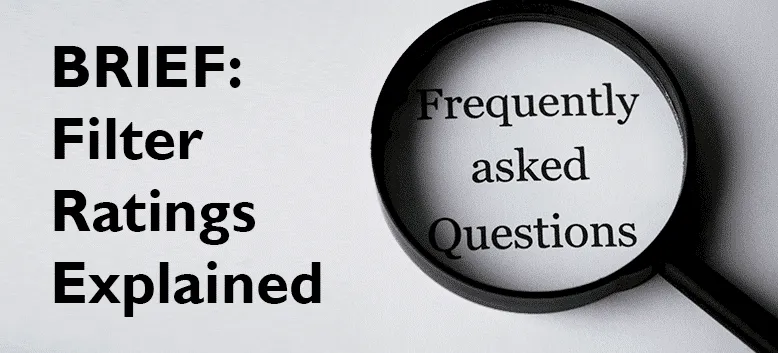If you’ve read our previous article on MERV and HEPA filters, you might be wondering what filter ratings mean. Similarly, you might be wondering what the “Class M according to DIN EN 60335-2-69” means next to some of the filter classifications for some of our fume extractors.
Wonder no more! In this article, we’ll be providing you with some general knowledge charts of the filter classifications’ rough numbers on their filtration efficiency.
MERV Filter Ratings
Minimum Efficiency Reporting Value filters are rated from 1-16.
| MERV | Minimum particle size | Typical controlled contaminant | Typical application |
| 1 – 4 | 10.0 μm | Pollen, dust | Residential window air conditioning units |
| 5 – 8 | 3 – 10 μm | Mold, pet dander | Residential, general commercial and industrial workspaces |
| 9 – 12 | 1 – 3 μm | Lead dust, auto emission particulates | Superior residential, better commercial, hospital labs |
| 13 – 16 | 0.3 – 1 μm | Bacteria, droplet nuclei (sneeze), most smoke | Hospital and general surgery |
HEPA Filter Ratings
High-Effiency Particulate Air filters must remove at least 99.95 – 99.97% of particles with a diameter equal to 0.3 μm.
| HEPA class | Retention (averaged) |
| E10 | 85% |
| E11 | 95% |
| E12 | 99.5% |
| H13 | 99.95% |
| H14 | 99.995% |
| U15 | 99.9995% |
| U16 | 99.99995% |
| U17 | 99.999995% |
M according to DIN EN 60335-2-69
EN 60335-2-69 refers to requirements for wet and dry vacuum cleaners for industrial and commercial use. Specifically, this code refers to the collection of hazardous, non-radioactive dust which is hazardous to health if inhaled, swallowed, or comes into skin contact. This includes micro-organisms and asbestos.
Within fume extractors, there are typically 3 classes for hazardous dust collection:
| Class | Minimum particle size | Retention |
| Class L | < 2 μm | 99% |
| Class M | < 2 μm | 99.9% |
| Class H | < 1 μm | 99.995% |




Comments are closed.